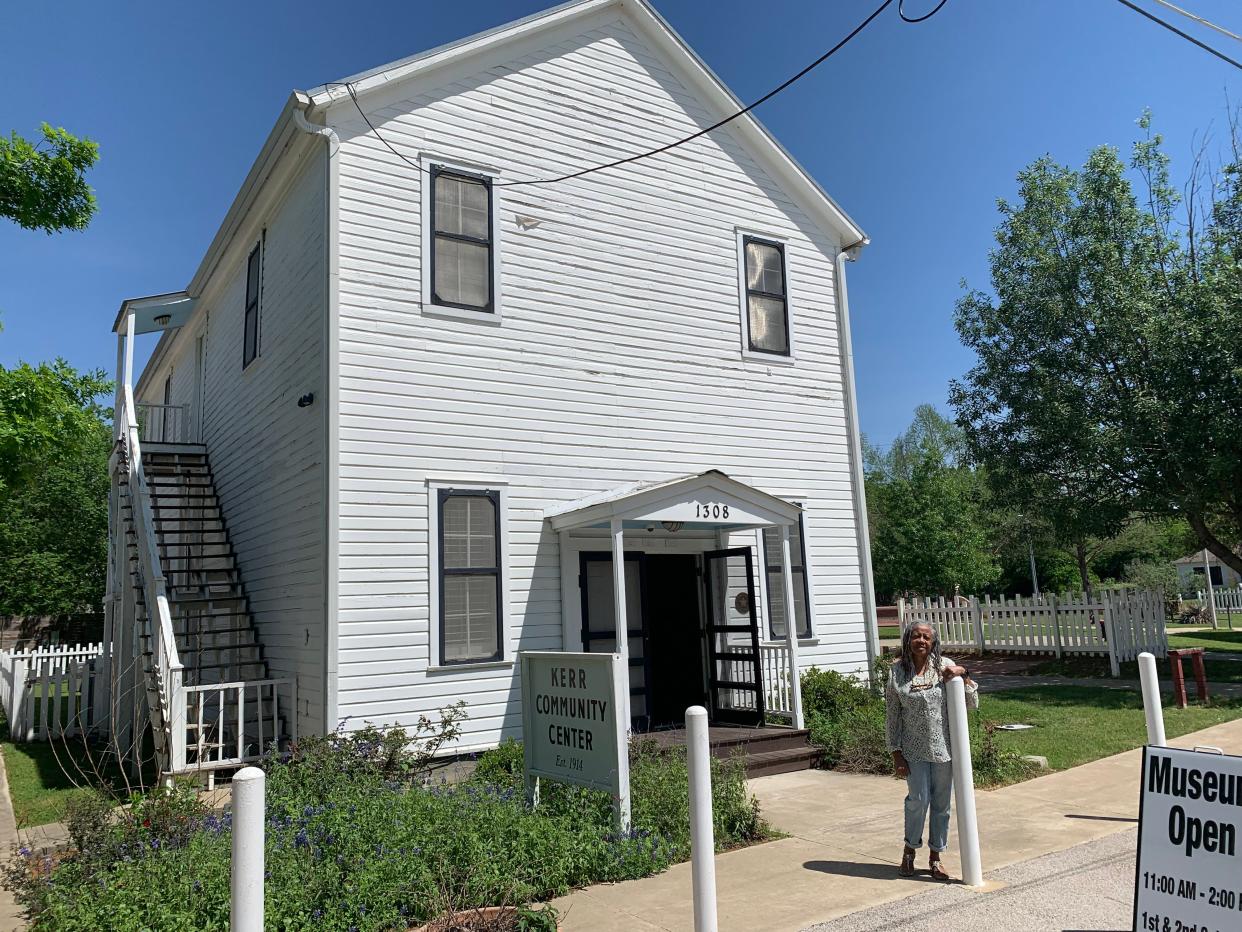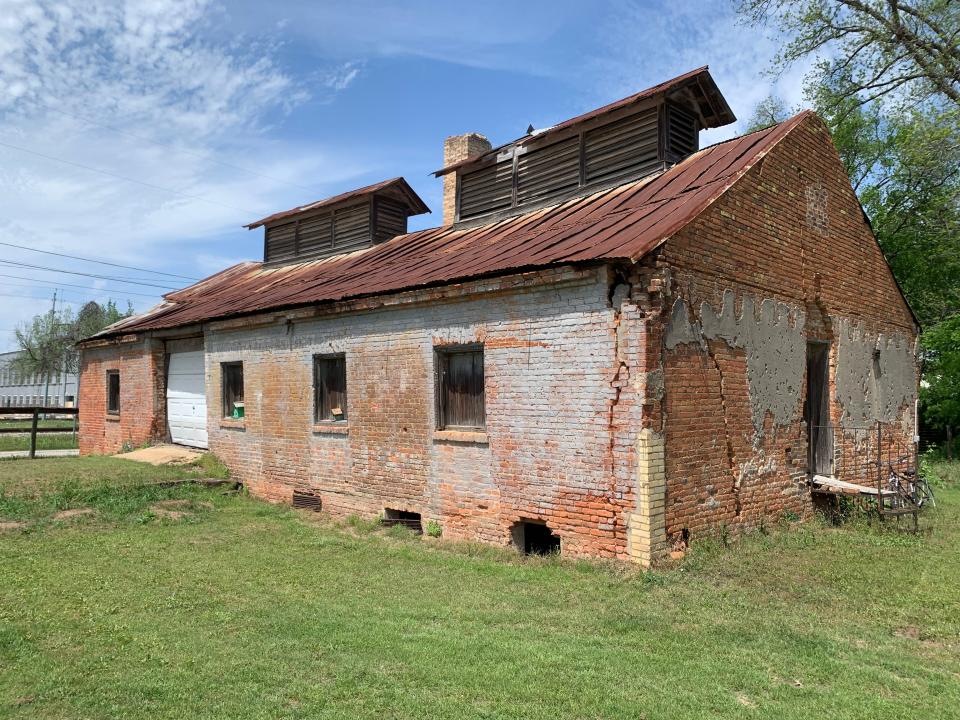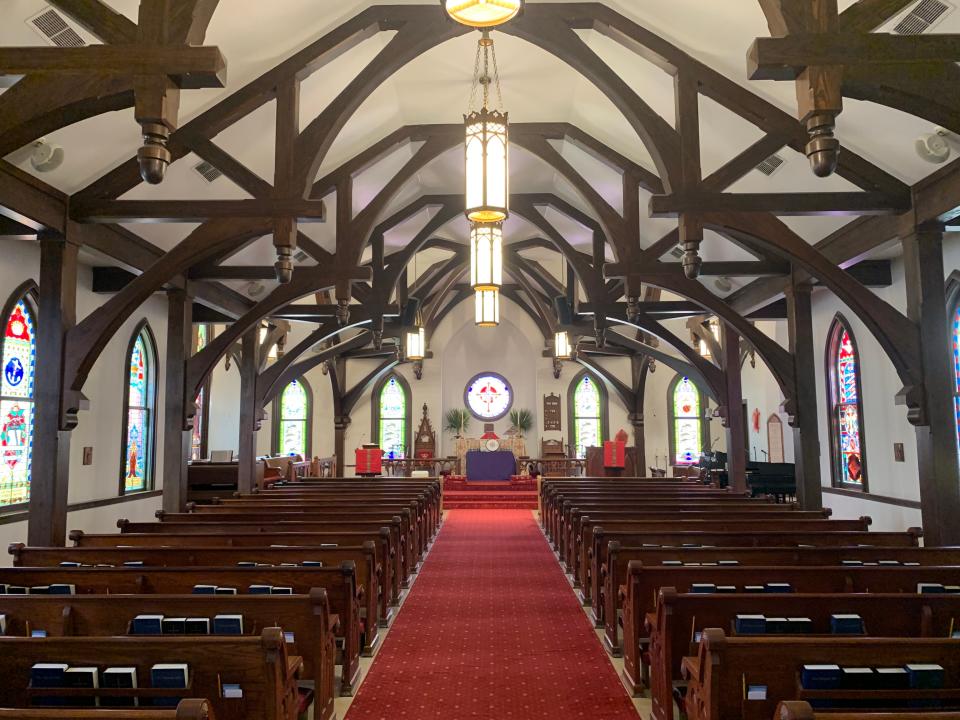Bastrop, Texas: Find out what you don't know about this historic Austin neighbor

- Oops!Something went wrong.Please try again later.
BASTROP — At least this town made it to the finals.
In 1839, Bastrop was the runner-up in an extraordinary decision to become the capital of the Republic of Texas. After ruling out several other candidates, the final tally of the commission appointed by the Congress of the Republic of Texas to choose the permanent capital was Austin 5, Bastrop 0.
More than a few twists of history like this one await the curious visitor to this growing historic town located on a bluff above the Colorado River.
But first you must exit Texas 71 and navigate the detours around the highway's work zones to reach the compact downtown.
Elgin bound: There's more than barbecue and bricks in this Texas town
"If you drive down 71 and don't stop, you don't know what you are missing," says Ken Kesselus, a Bastrop native, former mayor, retired Episcopalian pastor and community historian of the highest rank.
The author of four rigorously researched books about Bastrop County, Kesselus was my guide to the historic districts of Bastrop one spring Saturday. We set out on foot and by car to pinpoint facts about the town that readers of this column might not know.
We found more than a few.
How Bastrop became Bastrop, including the famous Lost Pines
Bastrop's location is crucial to its history: It lies on the straightest path along the braided Camino Real de los Tejas, the strands of the Native American and Spanish trails that ran from South Texas to East Texas. The portion of the Camino Real sometimes called the Old San Antonio Road crossed the Colorado River just downstream of downtown Bastrop at the mouth of a creek. The town was platted on a bluff above the river near fertile prairies and lumber-rich pine forests — the famous Lost Pines. You can see the ford from the Texas 71 underpass on Water Street. As we stopped to spy the ford, some cattle lingered on the firm limestone river bed.
The creek above the ford, by the way, wraps around the town's South End neighborhood. It floods often. But not downtown itself, which is perched on those high bluffs. Bonus: the green lands below the bluff make great playgrounds for picnicking and fishing.
'She's our queen': Mason turns out to see new crown placed on courthouse that burned
In 1827, the leader of the American newcomers, Stephen F. Austin wanted to plant a town in the northwestern sector of his main colony, which lay primarily between the Colorado and Brazos rivers. Half of what became the town of Bastrop, however, was outside the main colony's boundaries. Which is why, in 1827, Austin added his "Little Colony," extending his lands west to territory that would eventually include the present-day city of Austin. New Bastrop straddled the boundary between the two colonies.
Bastrop was officially founded in 1832. That makes it seven years older than Austin. Despite accounts that claim its original name was Mina, Kesselus confirms that it was first Bastrop (1832-1834), then Mina (1834-1837), then back to Bastrop (1837-present). Mina was named for Gen. Martín Francisco Javier Mina y Larrea, a Spanish officer and lawyer who figured in the fight for Mexican independence; Bastrop for Felipe Enrique Neri, the self-styled Baron de Bastrop, a go-between with friends among the Mexicans and the American colonizers. "Baron de Bastrop however never had any direct association with this place," Kesselus says.
Austin 5, Bastrop 0: While President Mirabeau B. Lamar is often credited with choosing the site of Austin for the permanent "seat of empire" — it briefly had been the village of Waterloo — it was officially selected as the capital by the congressional commission. As previously noted, Bastrop lost out in the end. "Everything before 1839 was big time," Kesselus says. "Everything after was 'little sister to Austin.'"

Bastrop County African American Cultural Center and other historic places
The Bastrop Casino (Farm and Fayette streets) was the meeting place for the local German community. It dates back at least to 1866 and, like many German American social clubs, staged theatricals, making the Casino Hall perhaps the oldest surviving Texas theater structure. Located on private property, it begs to be stabilized.
When people think of old theaters in the town, however, their minds go straight to the brick Bastrop Opera House ( 711 Spring St.), built in 1889 after the arrival of the MKT railroad in 1886. Early on, it mainly hosted traveling performers. It is in excellent condition and for more than 40 years has regularly staged plays, musicals and other events that draw audiences from well beyond Bastrop.
A granite centennial historical marker stands outside a modest structure at Water and Emile streets. The building served as part of a munitions plant during the Civil War, but some of these Tanner Rifles were considered untrustworthy, Kesselus says, and were not used in critical battles.
The Kerr Community Center (1308 Walnut St.), a two-story wooden building painted white, was built in 1914 to serve Bastrop's Black community. During World War II, it became known as the "Black USO," a place where segregated soldiers could relax and socialize. It is now home to the Bastrop County African American Cultural Center and amazing exhibits on freedom colonies located on the second floor. Retired Army Lt. Col. Doris Williams, museum curator who was born in Bastrop but grew up in Lubbock, is responsible for leading the campaign in the Black community to assemble the exhibits. "The actual history of freedom belongs to us alone," says Williams, whose grandmother wanted to be buried in her hometown of Bastrop. Now it is her granddaughter who preserves her legacy.
Calvary Episcopal Church (603 Spring St.) is a beauty. Designed by the distinguished architect Jasper Preston in a Gothic Revival style and finished in 1883, it was expanded to make it more functional for a 21st century environment during Kesselus tenure as pastor. Some preservationists did not like that plan, Kesselus admits, but to my eye, the results are extremely attractive.
Decades after Prohibition ended: Here's how cocktails became legal to serve in Texas
Bastrop State Park (9100 Park Road 1A), along with its near neighbor, Buescher State Park (110 Parks Road C), were built primarily by the Civilian Conservation Corps during the Great Depression. The Corps, part of FDR's New Deal, worked from plans made by designer Arthur Fuhr, who studied the craftsman and "national parks rustic" styles. Check out the dreamy cabins someday.
The Museum and Visitors Center of the Bastrop County Historical Society (904 Main St.) is a wonder. Each display is clear, properly lighted and historically accurate, as far as I could surmise. Among others, two excellent exhibits cover the local coal industry, which I knew almost nothing about, and the cotton boom, which includes a map of the county's freedom colonies, with background about slavery and emancipation.

More tidbits, historical or otherwise, about Bastrop
While downtown Bastrop was laid out in 3-acre "town lots," on the north side of town above Farm Street, land was divided into 12-acre farm lots. (A similar arrangement could be found in Austin, where the east side was meant to feed the city that stood on the other side of East Avenue.) The farm lots, however, turned out to be prime real estate for large, gorgeous Victorian and other stylish homes, such as the ones featured in the new book, "Historic Homes of Bastrop Texas" by Robbie Moore Sanders with Sandra Chipley and photographs by Mark Winslett.
As mentioned in a recent column, Camp Swift was assembled between Bastrop and Elgin "overnight" in 1942 and disassembled just as quickly in 1945. The training base transformed the county, which struggled to accommodate 90,000 military personnel. On leave, soldiers took regularly scheduled buses into Austin to find entertainment and social contacts.
The land between Bastrop and Elgin — reaching up to Rockdale and beyond — sits on seams of lignite coal. This soft coal fed various industries, especially when mixed with coal from western states. Among the biggest factories was an aluminum plant in Rockdale that has since closed. According to Kesselus, Bastrop County considered luring it south at one point. Many of the county's first Mexican American families worked in the mines.
In 1948, the Bastrop school district provided the test case, Delgado v. Bastrop ISD, that ended legally segregated Mexican American schools in Texas. An event will be held Sept. 20 on the occasion of its 75th anniversary. Former state Sen. Gonzalo Barrientos, whose father was a coal miner and who remembers the transition to integrated schools well, will be among the speakers.
I had never heard of this escapade, but Kesselus says that, during the 1980s, Austin started annexing land along the river and highways leading to Bastrop. (I recall that there was serious consideration for a new airport site near Manor.) Bastrop County's citizens struck back and quietly petitioned to join the town of Bastrop extraterritorial jurisdiction. Thus, Bastrop controls land far to the west, including the site of the Hyatt Lost Pines Resort, which contributes a tidy sum to the town's tax rolls.
Kesselus and I shared a meal on the town's historic Main Street, which comes alive, especially on weekends in fair weather. Several newcomers have opened shops and restaurants long this main stem. We lunched al fresco at Paw Paw's, which serves a fried, breaded catfish that is light as air and tender as a mother's love.
4 books about Bastrop history
Ken Kesselus, who rambled through historic Bastrop with me one Saturday this spring, has written these four prodigiously researched books, all available in paperback at the history museum, which receives 100 percent of the income from sales. Collectible copies can also be purchased online. Revised editions of the first two titles have been released in a single volume.
"History of Bastrop County, Texas: Before Statehood"
"History of Bastrop County, Texas: 1846-1865"
"Bastrop County During Reconstruction"
"Bastrop, Texas: 1874-1900"
This article originally appeared on Austin American-Statesman: Bastrop got closest to beating Austin to be Republic of Texas capital
